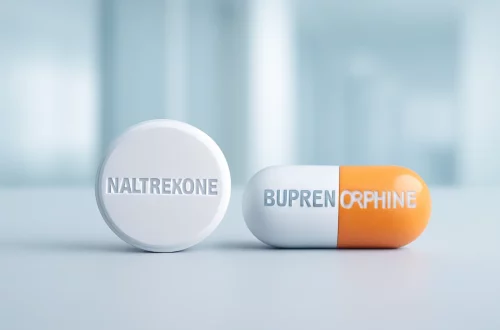
Enclomiphene vs TRT: Which is the Better Option for Testosterone Replacement?
Testosterone plays a critical role in various bodily functions, influencing everything from muscle mass to mood stability. For men, maintaining optimal testosterone levels is essential for overall health and well-being. However, many individuals face the challenge of low testosterone, often referred to as hypogonadism, which can lead to a range of physical and emotional issues. While traditional testosterone replacement therapy (TRT) has been a common solution for these concerns, alternative treatments have emerged, providing different approaches to managing testosterone levels.
Among these alternatives, enclomiphene has garnered attention as a potential option for men looking to increase their testosterone levels without the direct administration of testosterone itself. This distinction raises an important question: Which treatment option offers better outcomes for individuals struggling with low testosterone? The comparison between enclomiphene and TRT is more than just a matter of preference; it involves understanding the mechanisms, benefits, and potential drawbacks of each method.
As the conversation surrounding testosterone replacement evolves, it’s crucial to explore the nuances of these therapies. Factors such as hormonal balance, side effects, and overall health implications play significant roles in determining the most suitable option for each individual. By examining these aspects, we can gain a clearer understanding of which path may lead to better health outcomes for those affected by low testosterone.
Understanding Testosterone Replacement Therapy (TRT)
Testosterone Replacement Therapy (TRT) is a well-established medical treatment designed to elevate testosterone levels in men diagnosed with hypogonadism. This therapy typically involves the administration of synthetic testosterone through various methods, including injections, patches, gels, or pellets. The goal of TRT is to restore testosterone levels to a normal range, thereby alleviating symptoms associated with low testosterone, such as fatigue, reduced libido, and mood disturbances.
TRT works by directly supplementing the body with testosterone, allowing for an immediate increase in circulating levels. This method can effectively improve various aspects of a man’s health, including increased energy, improved muscle mass, enhanced libido, and even better cognitive function. Many men report significant improvements in their quality of life after starting TRT, making it a popular choice among those experiencing symptoms of low testosterone.
However, TRT is not without its drawbacks. One significant concern is the potential for side effects, which can range from mild to severe. Common side effects include acne, sleep apnea, and an increased risk of cardiovascular issues. Additionally, TRT can lead to infertility, as the external supply of testosterone can signal the body to reduce its own production of hormones necessary for sperm production. As a result, men considering TRT must weigh the benefits against the potential risks and long-term implications of treatment.
Another critical aspect of TRT is the need for ongoing medical supervision. Regular monitoring of hormone levels and overall health is essential to ensure the therapy is effective and to mitigate any adverse effects. This requirement can lead to increased healthcare costs and a commitment to long-term treatment, which may not be feasible or desirable for everyone.
Exploring Enclomiphene as an Alternative
Enclomiphene is a medication that has emerged as a potential alternative to traditional TRT. Unlike TRT, which provides testosterone directly, enclomiphene is a selective estrogen receptor modulator (SERM) that works by stimulating the body’s own production of testosterone. This approach can be particularly appealing for men who are concerned about the side effects associated with external testosterone administration or who wish to maintain their fertility.
The mechanism of action for enclomiphene involves blocking estrogen receptors in the hypothalamus, which prompts the pituitary gland to produce more luteinizing hormone (LH) and follicle-stimulating hormone (FSH). These hormones then stimulate the testes to produce more testosterone naturally. As a result, enclomiphene has the potential to increase testosterone levels without the direct risks associated with testosterone replacement.
Research has shown that enclomiphene can effectively raise testosterone levels in men with low testosterone while preserving fertility. This makes it a suitable option for younger men who may wish to conceive in the future. Additionally, the side effects associated with enclomiphene tend to be less severe than those of TRT, making it an attractive alternative for individuals looking for a less invasive approach to managing their testosterone levels.
However, enclomiphene is not without its challenges. While it may be effective for some, it may not work for everyone, and the results can vary widely among individuals. Furthermore, as a relatively newer treatment option, long-term data on its safety and efficacy are still being gathered. Patients considering enclomiphene should consult with their healthcare providers to discuss whether this option aligns with their health goals and circumstances.
Comparative Effectiveness and Considerations
When comparing enclomiphene and TRT, several factors come into play that individuals must consider. Each treatment option has its strengths and weaknesses, making it essential to evaluate personal health goals, medical history, and lifestyle factors when deciding on the best approach.
One of the primary benefits of TRT is its rapid effectiveness. Many individuals experience noticeable improvements in their symptoms shortly after starting treatment. This immediacy can be incredibly beneficial for those seeking quick relief from the debilitating effects of low testosterone. In contrast, enclomiphene may take longer to produce significant results, as it relies on the body’s natural processes to increase testosterone levels.
Another important consideration is the impact on fertility. For men looking to maintain their ability to father children, enclomiphene presents a significant advantage. By stimulating the natural production of testosterone without suppressing sperm production, enclomiphene may help preserve fertility in a way that TRT does not. This factor alone can make enclomiphene a preferable option for younger men or those planning to start a family.
Financial considerations also play a role in the decision-making process. TRT can be more expensive due to the need for ongoing medical supervision and hormone monitoring. Enclomiphene, while potentially less costly, may not be covered by all insurance plans, leading to varying out-of-pocket expenses. Patients should assess their financial situation and insurance coverage when evaluating treatment options.
Lastly, the potential side effects of each treatment must be carefully weighed. While TRT can lead to a range of side effects, enclomiphene’s profile tends to be less daunting. However, individual responses to treatment can vary, and what works for one person may not be suitable for another. Consulting with a healthcare provider is crucial in navigating these options and finding the most appropriate treatment plan.
In conclusion, both enclomiphene and TRT offer viable options for managing low testosterone levels, but the decision on which to pursue should be based on individual circumstances, goals, and medical guidance. As research continues to evolve, the understanding of these treatments will grow, providing more clarity for those seeking to optimize their health and well-being.
**Disclaimer:** This article is for informational purposes only and does not constitute medical advice. Always consult with a healthcare professional for any health concerns or before starting any treatment.




